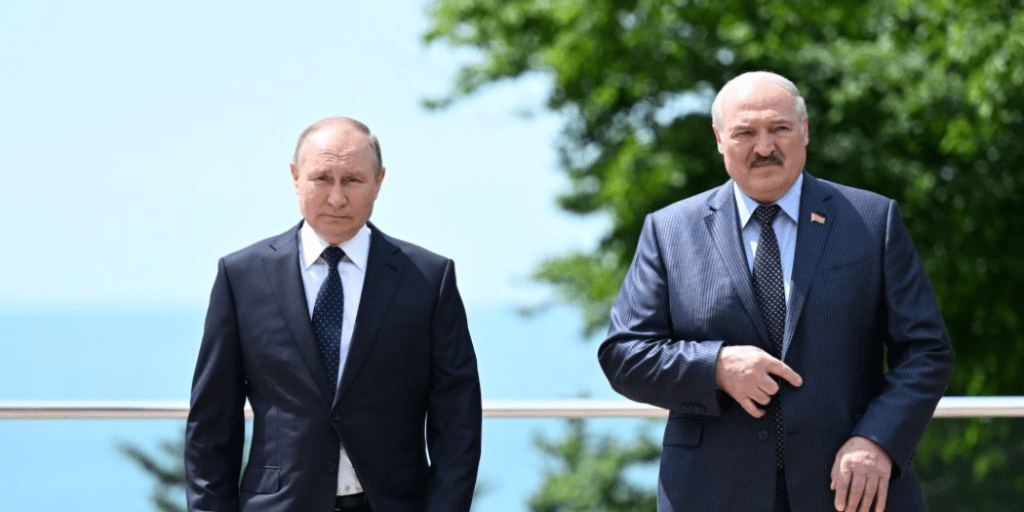By Brian Whitmore

Belarus is becoming the lynchpin of Russian President Vladimir Putin’s threats to expand the war in Ukraine.
Putin said in an interview with Rossiya-1 state television on June 5 that Moscow would “strike at those targets that we have not yet been hitting” in Ukraine if the West follows through on its pledge to provide Kyiv with long-range weapons. As the autocrat in the Kremlin was delivering that menacing message, Belarus dictator Alyaksandr Lukashenka was busy playing his tried-and-true role as Putin’s little helper and chief enabler.
Less than two weeks before Putin’s threat, on May 24, the Ukrainian General Staff announced that Russia had deployed a division of nuclear-capable Iskander-M missiles in the Brest region of Belarus near the Ukrainian border. The missiles have a range of 400-500 kilometers, which puts large parts of central and western Ukraine within striking distance. And the day after Putin’s remarks, on June 6, Ukraine’s General Staff announced that in addition to the Iskanders, Russia had also deployed Pantsir-S1 anti-aircraft gun systems and S-400 anti-aircraft missile systems.
Putin’s threat, coupled with the recent deployments of military hardware to the Belarusian-Ukrainian border and the first airstrikes in weeks against Kyiv, have raised alarms that Russia may be about to renew its assault on the Ukrainian capital and revive its earlier more expansive war ambitions. These steps have also starkly illustrated the absurdity of Lukashenka’s frequent protestations that he is not a co-aggressor in Russia’s war against Ukraine.







